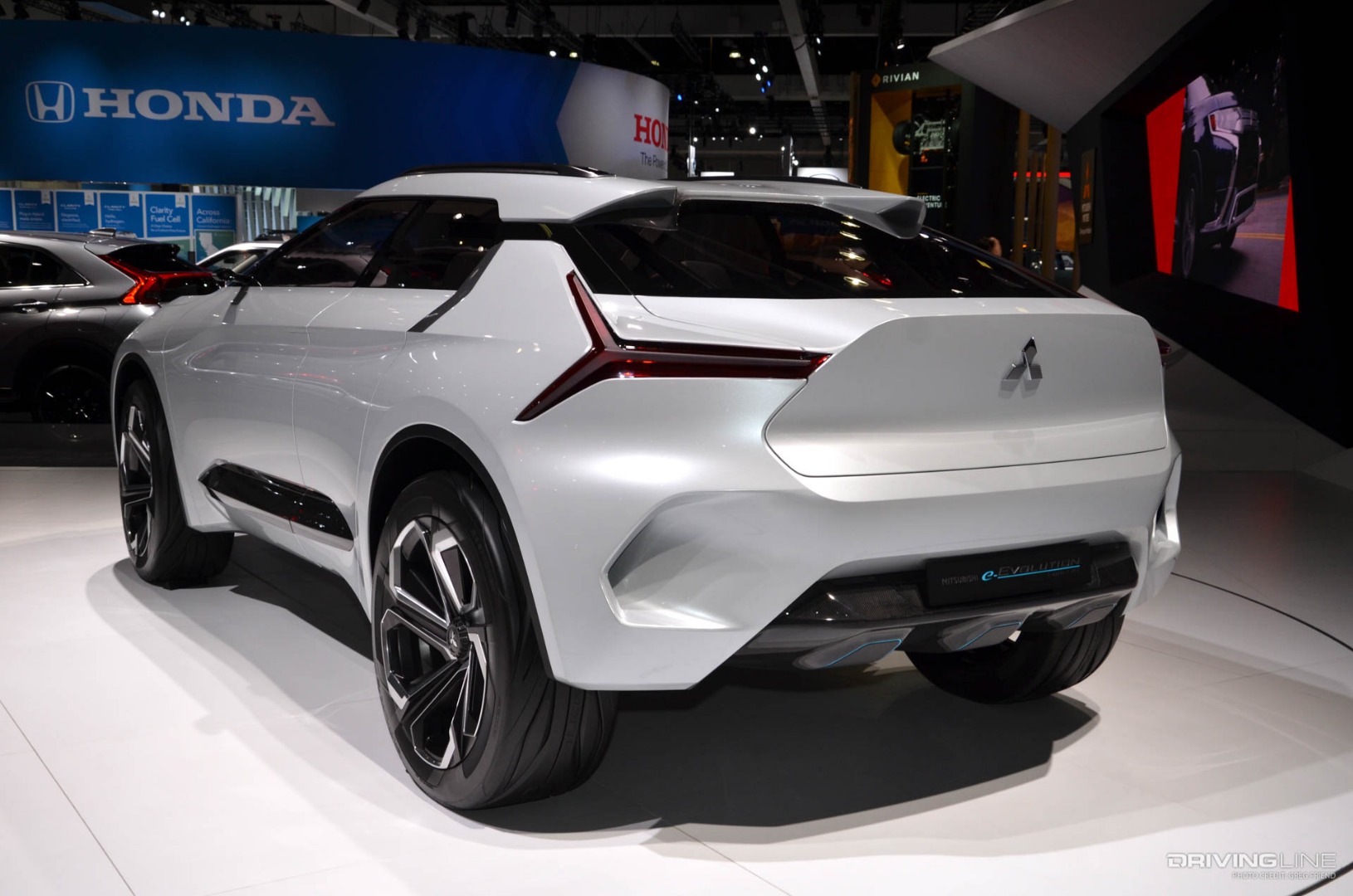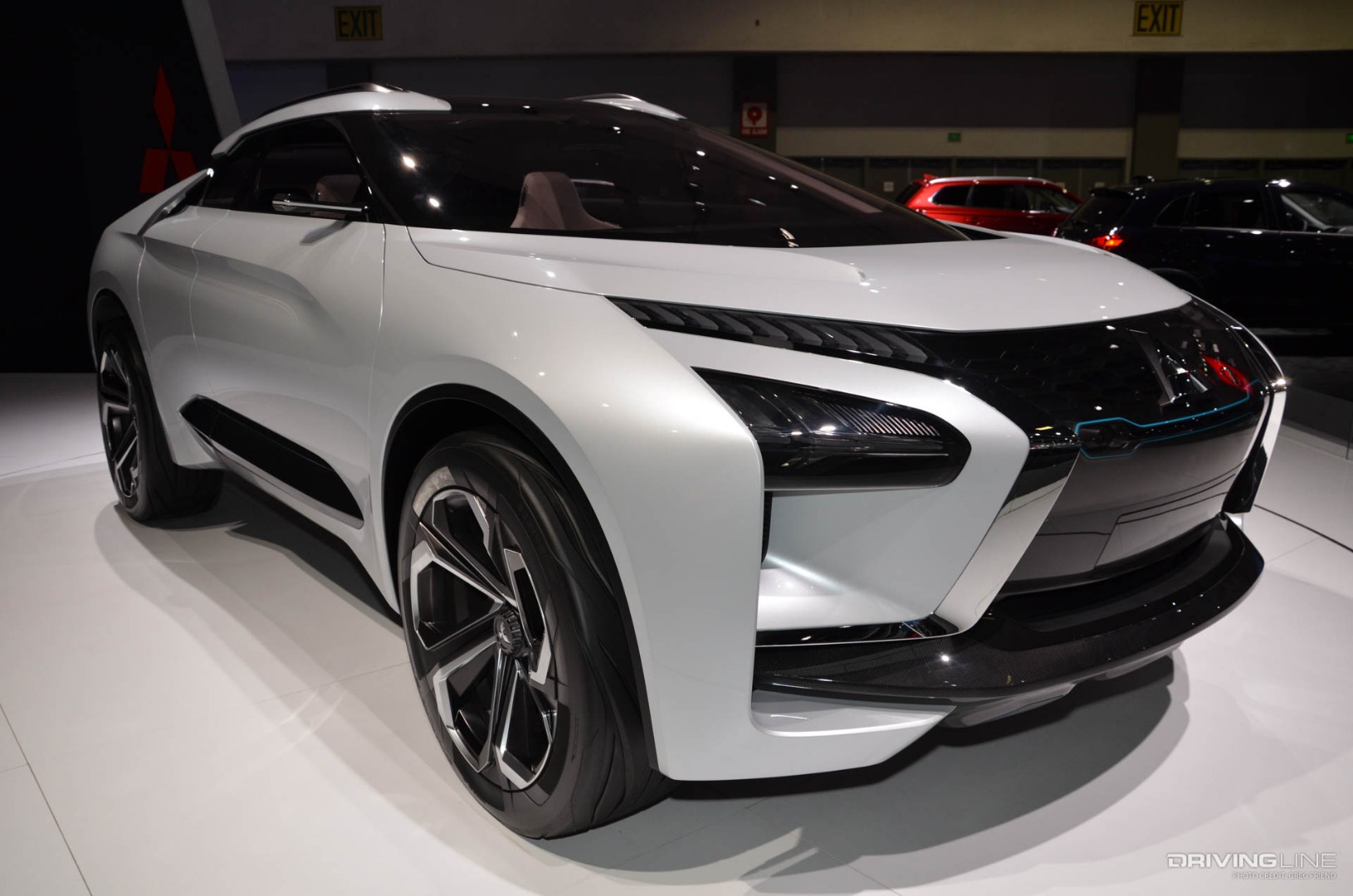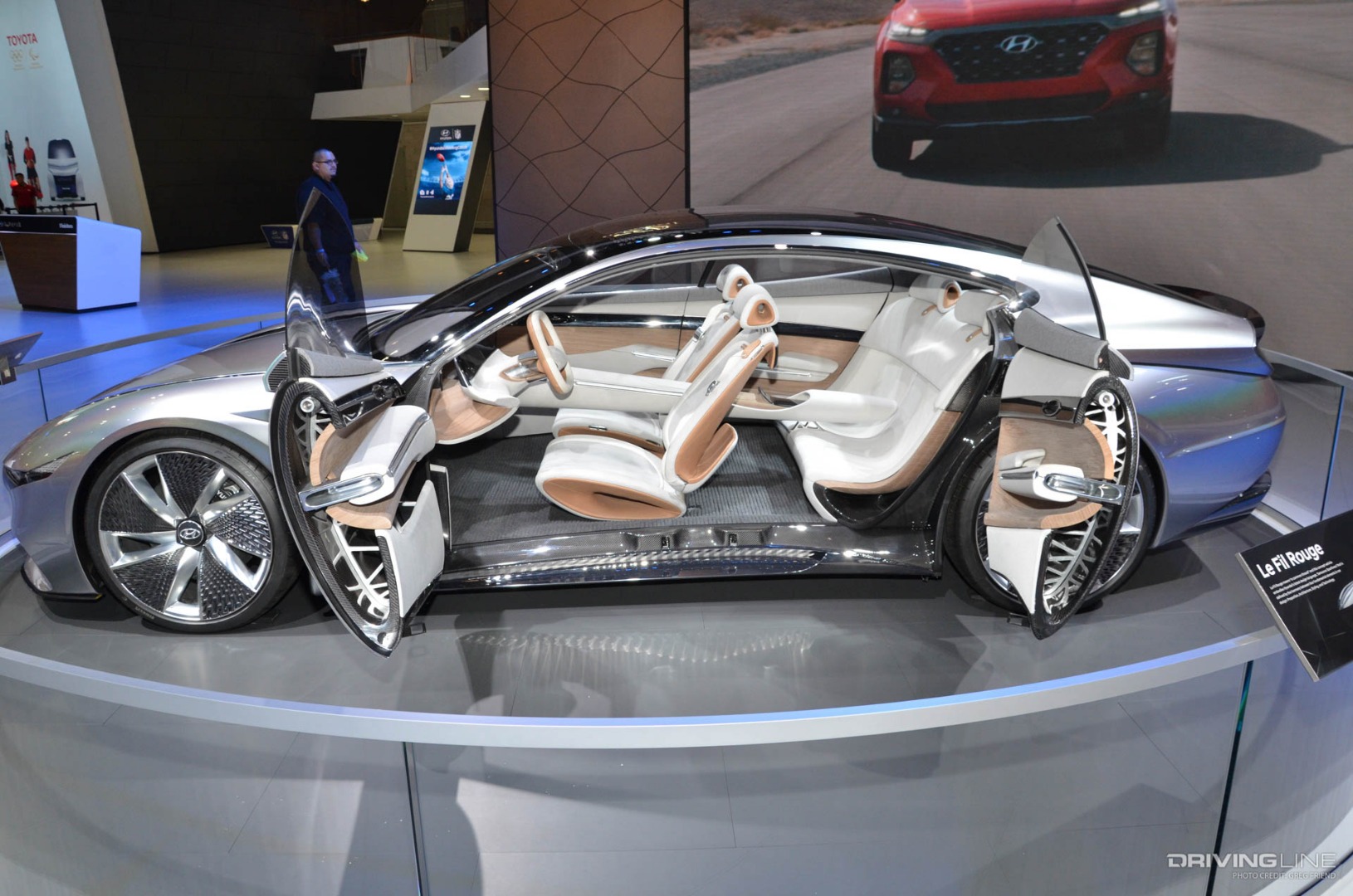Where did all the exhaust pipes go? It’s always exciting to see the concept vehicles at the LA Auto Show, and this year the theme of the the concept vehicles I saw was “electric,” which isn’t a bad thing given that electric motors produce 100% of torque immediately and electric vehicles are often all-wheel drive, which equals quick acceleration. Electric components and batteries can be placed in different configurations than the standard internal combustion engine so the use of electric parts (some of which don’t exist, yet) allow for designers to come up with fantastic concepts. Here’s a few photos of some of interesting concept vehicles I saw at the show.
1. Mitsubishi: e-Evolution
Mitsubishi describes this vehicle as “…a peek into the future product direction…that incorporates the strengths of a sport utility vehicle, electric vehicle, and the ability to integrate new systems for a connected mobility customer experience.”

I’m not sure what a “connected mobility experience" is, but I like the features of the vehicle: batteries stored centrally for excellent balance, triple motor 4-wheel-drive system coupled with a dual motor active yaw control (AYC) and Mitsubishi’s super-all-wheel control (S-AWC) dynamic system.

I don't know what to think about the built-in artificial intelligence system. It augments driver capabilities and builds a picture of the driver’s skill level which constructs a training program that will give advice to said driver through voice dialogue and a dashboard display. If everyone had that feature it could be revolutionary—would it help make everyone better drivers?

2. Hyundai: Le Fil Rouge
Meaning “a common thread” in French, this concept “embodies Hyundai’s latest design language, ‘sensuous sportiness’ that is defined by the harmony between four fundamental elements in car design: proportion, architecture, styling, and technology.”

The designers are said to have used the Golden Ratio through the basic design of the exterior: with a long wheel base, large wheels and short overhangs—and the interior: the distance from the front wheel center to the base of the windshield, which they claim, “ensures the perfect driving position.”

It certainly is a good-looking car that is sleek, and no one should have trouble entering it with the standard doors front and “suicide” or forward opening doors for the rear seats. Unfortunately, there was no mention of any potential power plant.

3. Volkswagen: Buzz
It looks fun and it definitely reminds us of the VW Bus from yesteryear in its size and layout. Geared toward 21st century needs, this Buzz is slightly more aerodynamic than its predecessor and it won’t be considered under-powered with an anticipated 369hp electric motor.

Side-mirrors are out, but rear-facing side-cameras are in. The interior is spacious and looks like it could be converted for a variety of enjoyable uses like surfing and camping, and a bunch of commercial uses, too, like delivery van.

I’m happy to see VW revive the bus, even if they misspelled the name.

4. Infiniti: P10
Drawing from the design elements of early “speedsters” where power to weight ratios were improved with a single-seat and never intended for passengers, Infiniti’s P10 (Prototype 10) is simply beautiful.

It’s a driver focused car (who else could it be focused on?), meant to be enjoyed on the left coast of the continental United States, “This instinct for challenging accepted automotive norms—aided by the ever-temperate weather—meant California was destined to become the spiritual home of the high-performance speedster.” I assumed the association was because there was no top.

The P10 is part of their “electrification strategy” and promise that electrification equals performance in their eyes, “our cars will be powerful, efficient, and highly rewarding to drive, and P10 is a physical representation of our electrified future,” according to Karim Habib, Infiniti’s Executive Design Director.

5. Toyota: TJ Cruiser
This is what you get when you cross a van and an SUV, according to Toyota (don’t call it a mini-Flex).

It’s also the most realistic and most-likely-to-see-production concept on this list. My favorite aspect of the truck is the fold-down seats from the cargo area all the way to, and including, the front passenger seat—spanning a distance of almost 10 feet. One of those clever ideas that I’m surprised wasn’t thought up sooner.

Power will come from a 2.0L engine with the Prius’ hybrid components and options include front or four-wheel drive. Production could happen in as little as two years.

Bonus Vehicle: Icona Nucleus
Out of left field comes the Nucleus concept car, thought up by an Italian design firm. They call it “the ultimate self-driving living room,” (seriously!).

While it is probably a dream for commutes that last an hour or longer, I can’t think of a less inspiring tag line—but then this car is obviously not intended for people who like to drive because there is no steering wheel or dashboard. In fact, there doesn’t seem to be many controls at all with the exception of a seat recliner and climate controls.

However, there is one aspect worthy of note: there is no side glass, instead it employs semi-transparent bodycolor panels that the passengers can see out of, but people outside the vehicle cannot see in. Neat, but I like my living room stationary.
